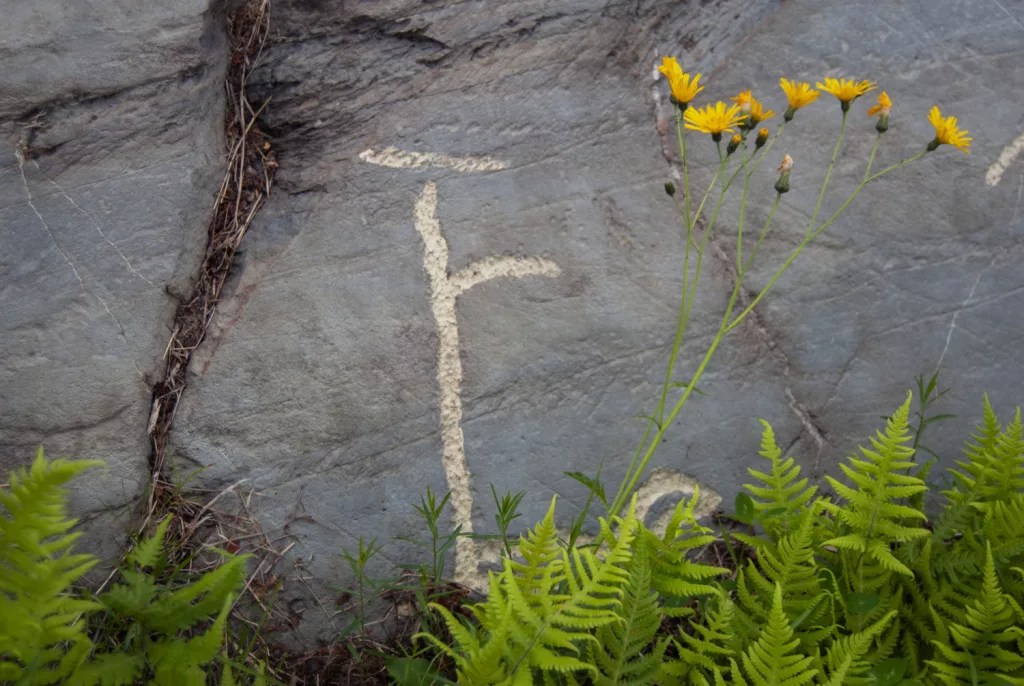
I visited the petroglyphs at Holtås in Levanger on the 2nd of July 2022. The rock art is next to the road when driving along old E6. Holtås, sometimes written as Holte, is in the Ronglan area of Levanger.
Holtås has around 100 figures, many resembling deer animals like moose or reindeer. The figures’ carving styles vary, ranging from minimalistic to quite detailed. Most, or all of them, are pretty far from being anatomically correct. Many of the animal figures are covered in abstract patterns, and there are also stand-alone abstract figures that are difficult to interpret.
Academics typically date this site to the beginning of the Nordic Bronze Age (1,800 BCE – 500 BCE). The subject matter, deer figures, are considered more typical of Stone Age petroglyphs. The Holtås site’s Bronze Age dating is mainly due to the style, and not (as far as I know) because of other archeological findings associated with the site. Since there is style variation within the site, all carvings were not necessarily made in the same time period.














There are a lot of holes in the rock at Holtås. Some holes look man-made, but there is a lot of other types of damage to the rock and the holes probably occurred naturally.








Holtåas has several examples of two deer figures close together, with one of them being upside-down to the other. Sometimes upside-down figures in rock art are interpreted as being dead, or connected to the underworld.










Many of the figures at Holtås, like the one below, seem fragmented. Perhaps they were originally part of larger figures that has have faded away over time.



















I often find recent graffiti at petroglyph sites, with people making their own carvings next to or right on top of the ancient rock art. I didn’t notice any recent markings on the rock surface at Holtås, but instead people had done their little carvings on an information plaque next to the site. It seems like many people get a strong urge to carve something themselves when viewing the petroglyphs.

